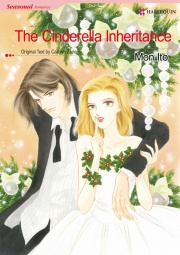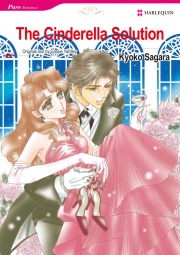Moon and Blood Volume 1 by Nao Yazawa
Despite the general cultural mania for vampires that has overrun popular culture recently, I still enjoy a good vampire manga. Moon and Blood by Nao Yazawa seems like a slight format experiment from Digital Manga Publishing. The online and print versions of this volume are around half the size and price of a typical manga. As a result, this volume just feels like the very start of the story, with all the characters and conflicts established but not elaborated on.
Sayaka is a normal cheerful teenage girl who is coping with everyday life after the loss of her mother. She fends off the advances of boy next door Takeshi and deals with her father and brothers. One morning when she’s getting ready for school she comes downstairs to find a handsome boy sitting with her family. Her father makes the announcement that Kai is the son of an old family friend and he’s going to be living with them for awhile. Sayaka immediately starts building up scenarios of romance in her head, but when she gets to school she finds that Kai seems very disaffected and sleepy. He naps through math class, but when the teacher calls on him to demonstrate a problem Kai has no difficulties at all. When the other boys tease him during PE, he manages a slightly hungover slam dunk. Kai takes refuge in a school closet and sleeps the day away. At home, Sayaka gets a glimpse of a possibly kinder boy as he helps her with cooking and goes on moonlit walks with her. Kai tells Sayaka not to get too close to him, because they are opposite types of people. Kai is a vampire, and his vampire mother is a young girl who sometimes has the form of a cat. She enjoys feeding on Sayaka’s male relatives, and wonders why Kai isn’t taking advantage of his closeness to the girl. There’s an undercurrent of melancholy romantic tension in the way Sayaka and Kai deal with each other, and while she thinks he’s odd she doesn’t seem to suspect his true nature yet.
Yazawa has the type of deceptively simple but expressive art style that I enjoy. Takeshi is like an energetic puppy dog bouncing around Sayaka. Sayaka exhibits all the mood swings of a typical teenage girl, but she exhibits genuine concern and caring when she thinks Kai is lonely. Kai’s otherworldly nature is signaled by his more angular eyebrows and slightly smaller pupils eyes. Kai isn’t above goading Takeshi when he can, but it seems like his attempts to distance himself from Sayaka aren’t going to work. Moon and Blood seems like a good choice for people wanting a simple paranormal shoujo romance without all the overblown angst of Vampire Knight
Access to electronic copy provided by the publisher.


Recent Comments